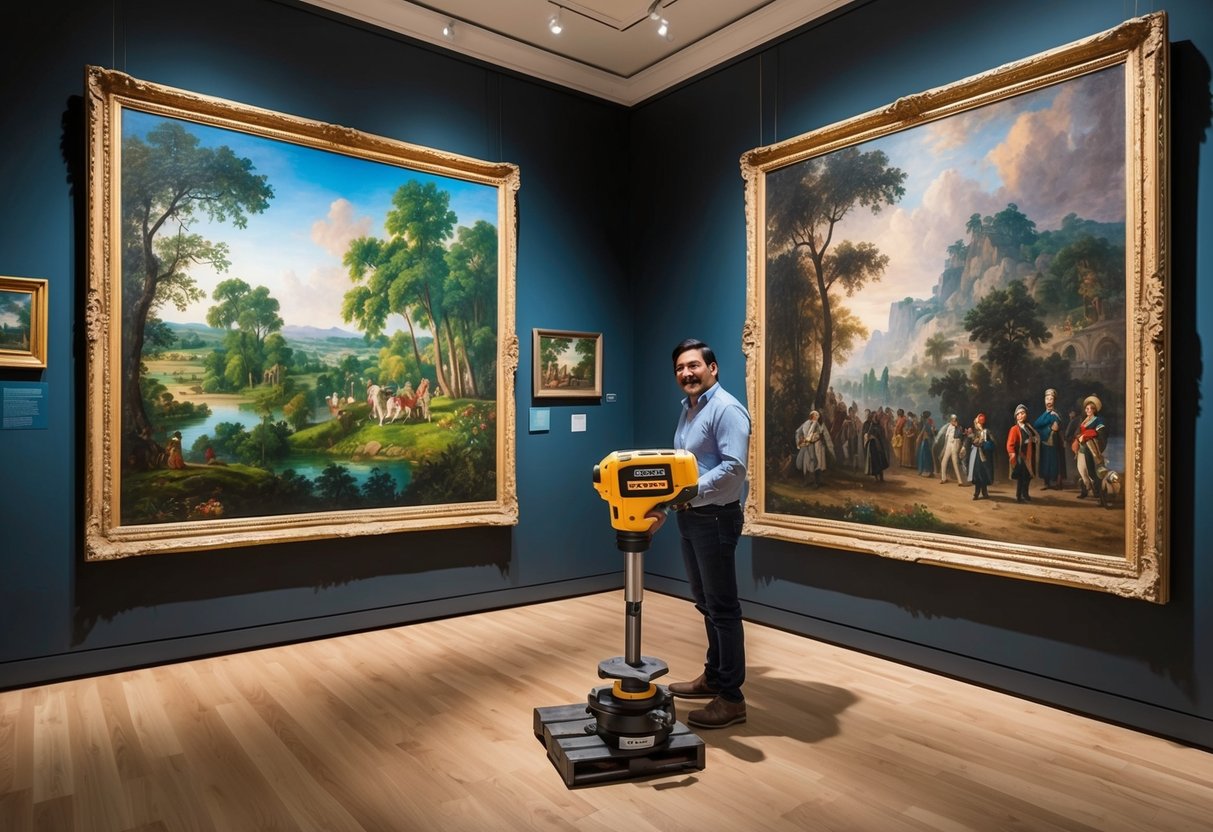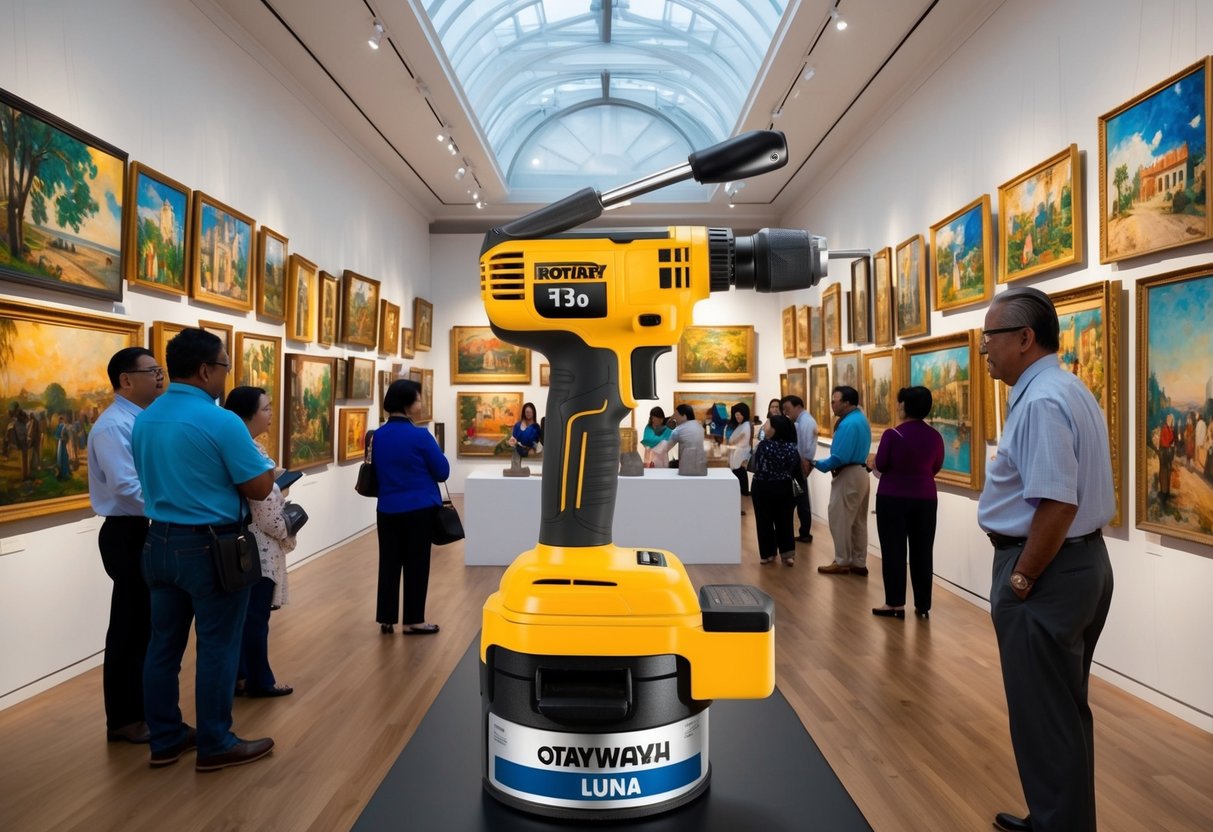The Artistry and Legacy of a Filipino Master – A Fresh Look at His Impact on Philippine Art
Juan Luna was a remarkable Filipino painter who left an indelible mark on the art world. His masterpieces, like the iconic Spoliarium, showcase his incredible talent and skill. Luna’s work blends European techniques with Filipino themes, creating a unique artistic style.

Juan Luna’s legacy continues to inspire artists and art lovers around the world. His paintings are treasured in museums and private collections, serving as a source of pride for the Philippines. Luna’s life story is just as captivating as his art, filled with triumphs and tragedies that shaped his creative vision.
You can discover Luna’s brilliance by viewing his paintings in person or studying high-quality reproductions. Pay attention to his use of light, color, and emotion in each piece. By exploring Luna’s art, you’ll gain insight into Philippine history and culture during a pivotal time.
Key Takeaways
- Juan Luna’s paintings blend European techniques with Filipino themes
- His most famous work, Spoliarium, represents the struggles of colonized Filipinos
- Luna’s art continues to inspire and is displayed in museums worldwide
The Life of Juan Luna
Juan Luna’s journey from a small town in the Philippines to becoming a renowned artist in Europe was marked by triumph and tragedy. His life intertwined with the complexities of colonialism and the struggle for Philippine independence.
Early Years and Artistic Beginnings
Juan Luna was born in 1857 in Badoc, Ilocos Norte. As a young boy, he showed a talent for drawing. His family moved to Manila, where he studied at the Ateneo Municipal de Manila.
Luna’s artistic talents flourished during this time. He took drawing lessons and won prizes in local art competitions.
In 1877, Luna traveled to Spain to further his art education. He studied at the Real Academia de Bellas Artes de San Fernando in Madrid. There, he honed his skills in academic painting.
Peak Artistic Career in Europe
Luna’s talent quickly gained recognition in Europe. His most famous work, Spoliarium, won a gold medal at the 1884 Madrid Exposition of Fine Arts.
This massive painting, over 4 meters tall and 7 meters wide, depicts a scene from ancient Rome. It shows dead gladiators being dragged away after combat.
Luna’s success in Europe was groundbreaking for a Filipino artist. He became part of a group of Filipino expatriates in Europe, including José Rizal, who advocated for reforms in the Spanish-controlled Philippines.
Personal Tragedy and Legal Battles
In 1892, tragedy struck Luna’s personal life. In a fit of jealous rage, he killed his wife and mother-in-law in Paris.
Luna was tried for this double homicide. The trial became a sensation in France. It highlighted issues of race and colonialism.
The French jury acquitted Luna based on temporary insanity. The verdict was influenced by Napoleonic laws and racial stereotypes of the time.
This event deeply affected Luna’s life and career. It marked a turning point in his artistic and personal journey.
Later Years and Legacy
After the trial, Luna returned to the Philippines. He became involved in the growing independence movement against Spanish rule.
When the Philippine Revolution broke out in 1896, Luna sided with the revolutionaries. He designed the uniforms for the Philippine revolutionary army.
Luna also served as a diplomat for the short-lived Philippine Revolutionary Government. He traveled to Paris to lobby for recognition of Philippine independence.
Luna died in Hong Kong in 1899, just 42 years old. Despite his short life, his impact on Philippine art and history was immense. Today, you can see his masterpieces in museums in Manila and Madrid.
Juan Luna’s Masterpieces
Juan Luna created stunning works that showcase his talent and skill. His paintings blend European techniques with Filipino themes, capturing emotions and historical moments.
Spoliarium: A Historical Overview
Spoliarium is Luna’s most famous painting. It shows dying gladiators in ancient Rome. The huge canvas measures 4.22 by 7.675 meters.
Luna spent 8 months painting Spoliarium. He finished it in 1884 for an art show in Madrid. The painting won a gold medal at the 1884 Exposición Nacional de Bellas Artes.
Spoliarium shows Luna’s skill with light, shadows, and human forms. It captures a dramatic scene with strong emotions. The painting is now a national treasure in the Philippines.
The Parisian Life and Other Notable Works
Luna created many other impressive paintings. “The Parisian Life” shows a woman in a café. It gives you a glimpse of 1880s Paris.
“The Death of Cleopatra” is another famous work. Luna painted it in 1881. It shows the Egyptian queen’s final moments with vivid details.
Luna also made “Une Bulaqueña,” a portrait of a Filipino woman. This painting blends European and Filipino styles.
Recovery and Restoration of Artworks
Over time, some of Luna’s works needed care. Experts have worked to save and restore his paintings. They use special methods to clean and protect the art.
One example is “The Parisian Life.” It was restored in 2002. The process took months of careful work. Now you can see the painting’s original colors and details clearly.
Restoring Luna’s art helps keep his legacy alive. It lets new generations enjoy his masterpieces.
Lost and Rediscovered: Unveiling Hidden Gems
Some of Luna’s paintings were lost or forgotten. But art experts keep finding “new” Luna works. In 2020, a painting called “Hymen, Oh Hyménée” was found in Europe.
Another discovery was “Roman Wedding Feast.” It turned up at an auction in 2015. These finds excite art lovers and historians.
Each rediscovered painting adds to our knowledge of Luna’s skill. They give you new chances to explore his art and ideas.
Cultural and Historical Impact

Juan Luna’s art profoundly shaped Filipino identity and sparked discussions about colonialism. His works blended European techniques with Filipino themes, leaving a lasting mark on art and politics.
Revolutionary Messages in Art
Luna’s paintings often carried hidden meanings about the Philippine independence movement. His most famous work, “Spoliarium,” showed the brutal aftermath of gladiator fights. But many saw it as a critique of Spanish rule in the Philippines.
The large canvas depicted fallen gladiators being dragged away. This imagery resonated with Filipinos who felt oppressed. Luna used classical scenes to comment on current issues. His art became a tool for expressing revolutionary ideas without direct confrontation.
Nationalism and The Filipino Identity
Luna’s success in Europe boosted Filipino pride. He proved that Filipino artists could compete globally. His wins at international exhibitions challenged colonial views about Filipino capabilities.
His paintings often featured Filipino subjects and scenes. This helped build a sense of shared culture and history. Luna’s work became a symbol of Filipino talent and potential for self-rule.
He used his art to showcase Filipino culture to the world. This helped create a stronger sense of national identity among Filipinos at home and abroad.
Colonial and Post-Colonial Discourse
Luna’s art sparked debates about colonialism. His European training and Filipino heritage made him a bridge between two worlds. His work raised questions about cultural authenticity and influence.
Some saw his European style as a sign of colonial influence. Others viewed it as Filipinos mastering foreign techniques for their own purposes. Luna’s art became a focal point for discussions about cultural identity under colonial rule.
These debates continued after Philippine independence. Luna’s legacy played a role in shaping ideas about Filipino art in the post-colonial era.
From Nationalism to Global Recognition
Luna’s fame spread beyond the Philippines during his lifetime. He gained respect in European art circles, breaking stereotypes about Asian artists. His work appeared in major exhibitions and won prestigious awards.
After his death, Luna’s reputation grew. His paintings became national treasures in the Philippines. International museums and collectors sought his work.
Today, Luna is recognized as a major figure in Asian art history. His paintings fetch high prices at auctions. Art scholars study his techniques and themes. Luna’s journey from national hero to global artist reflects the evolving appreciation of Filipino art worldwide.
Exhibitions and Collections

Juan Luna’s artworks continue to captivate audiences through various exhibitions and collections. His masterpieces are showcased in prominent museums and private collections, allowing art enthusiasts to appreciate his talent and legacy.
The National Museum and Ayala Museum’s Role
The National Museum of Fine Arts in Manila plays a crucial role in preserving Luna’s legacy. It houses several of his most famous works, including the iconic “Spoliarium.” This massive painting draws countless visitors each year.
The Ayala Museum also contributes to Luna’s enduring fame. In June 2023, it unveiled Luna’s long-lost masterpiece “Hymen, oh Hyménée!” for the first time in the Philippines. This exhibition, titled “Splendor: Juan Luna, hero painter,” runs until December 30, 2023.
Both museums offer you the chance to see Luna’s works up close and gain a deeper appreciation for his skill and artistry.
León Gallery Auctions and Private Collections
León Gallery, a prominent auction house, has played a significant role in bringing Luna’s works to private collectors. Jaime Ponce de León, the gallery’s director, has facilitated the sale of several Luna paintings.
Private collectors have become important custodians of Luna’s art. Their acquisitions help preserve his works and sometimes lead to public exhibitions through long-term loans to museums.
You can often find Luna’s paintings featured in León Gallery’s auctions, giving you the opportunity to own a piece of Philippine art history.
International Exhibits: Spreading Luna’s Legacy
Luna’s artworks have traveled beyond the Philippines, showcasing his talent to international audiences. His paintings have been exhibited in prestigious venues worldwide, including the Museo del Prado in Madrid.
During his lifetime, Luna gained recognition at the Universal Exposition in Paris and the Exposición Nacional de Bellas Artes in Madrid. These events helped establish his reputation as a world-class artist.
Today, international exhibitions continue to introduce Luna’s work to new audiences, ensuring his legacy lives on globally. You can look out for these exhibits to experience Luna’s art beyond Philippine shores.
Anniversaries and Commemorations

Juan Luna’s artistic legacy continues to be celebrated through significant events and commemorations. These occasions honor his contributions to Philippine art and history.
125th Anniversary of Philippine Independence
The 125th anniversary of Philippine independence in 2023 highlighted Juan Luna’s role in shaping national identity. His paintings became symbols of Filipino pride and resistance against colonial rule. During this milestone, many museums showcased Luna’s works in special exhibits.
Art historians gave talks about Luna’s influence on the independence movement. Schools organized field trips to view his paintings. The government issued commemorative stamps featuring his most famous pieces.
This anniversary renewed interest in Luna’s art among younger generations. It sparked discussions about the intersection of art and nationalism in the Philippines.
Commemorating Juan Luna’s Contributions
Museums and cultural institutions regularly hold events to remember Juan Luna’s artistic achievements. The National Museum of the Philippines hosts an annual Juan Luna Day, featuring guided tours of his works.
Art competitions inspired by Luna’s style encourage new artists to explore his techniques. Scholars continue to analyze his paintings, uncovering new insights into his methods and inspirations.
A recent exhibition titled “Splendor: Juan Luna, Painter as Hero” drew large crowds. It showcased lesser-known works and personal items, giving visitors a deeper understanding of the artist’s life.
These commemorations ensure that Luna’s legacy remains vibrant in Philippine culture. They remind you of his lasting impact on art and national identity.
Modern Media and Art Promotion

Juan Luna’s art lives on through innovative digital platforms and collaborations. These efforts bring his masterpieces to new audiences and keep his legacy vibrant in the 21st century.
Documentary Features and Video Tours
Documentary films offer deep dives into Juan Luna’s life and work. These productions blend expert insights with stunning visuals of his paintings.
CNN Philippines aired a special exploring Luna’s impact on Filipino art. The show featured interviews with art historians and close-ups of his most famous works.
Virtual museum tours now let you see Luna’s paintings up close from anywhere. These video tours offer 360-degree views and zoom features for examining brush strokes and details.
Ambeth R. Ocampo, a leading historian, often narrates these digital experiences. His expertise adds context to Luna’s art and life story.
Prominent Figures and Cultural Endorsements
Filipino celebrities help introduce Juan Luna to younger generations. Their star power draws attention to his artistic legacy.
Lea Salonga, the Broadway star, has spoken about Luna’s influence on Filipino culture. Her social media posts highlighting his paintings reach millions of followers.
Athletes like Manny Pacquiao and Hidilyn Diaz have visited Luna exhibits. Photos of their museum trips spark interest in art history among sports fans.
Fashion designer Gino Gonzales created a clothing line inspired by Luna’s color palette. This blend of art and fashion brings Luna’s work into everyday life.
Tech and Corporate Partnerships for Art
Big companies team up with museums to showcase Luna’s art through technology. These partnerships create new ways to experience his paintings.
Samsung partnered with the National Museum to create “The Premiere Room.” This space uses high-tech projectors to display Luna’s works in stunning detail.
The Ayala Corporation sponsors art education programs focused on Luna. These initiatives bring art lessons to schools across the Philippines.
Mobile apps now offer guided tours of Luna’s paintings. You can learn about his techniques and inspirations while viewing digital reproductions on your phone.
Frequently Asked Questions
Juan Luna’s contributions to Philippine history and art are significant and wide-ranging. His works continue to inspire and spark interest among art enthusiasts and historians alike.
What significant contributions did Juan Luna make to Philippine history?
Juan Luna played a crucial role in shaping Philippine nationalism through his art. His paintings brought international recognition to Filipino talent, helping to foster a sense of national pride.
Luna’s involvement in the Propaganda Movement alongside figures like Jose Rizal was key in advocating for reforms in Spanish-ruled Philippines.
What inspired Juan Luna to create the Spoliarium, and what does it symbolize?
Luna drew inspiration from the brutal scenes of ancient Roman gladiatorial contests for the Spoliarium. The painting symbolizes the oppression and injustice faced by Filipinos under colonial rule.
The work’s powerful imagery and emotional depth resonated with many, making it a symbol of Philippine nationalism and a critique of social injustices.
Could you provide details on the life of Juan Luna and his role in the Philippine revolution?
Juan Luna was born in 1857 in Badoc, Ilocos Norte. He studied art in Manila and later in Madrid, where he gained recognition for his exceptional talent.
Luna became involved in the Philippine Revolution through his association with reform-minded Filipinos in Europe, including Jose Rizal.
How has Juan Luna’s artistry been recognized in terms of awards and achievements?
Luna’s most notable achievement was winning the gold medal at the 1884 Exposición Nacional de Bellas Artes in Madrid for his masterpiece, Spoliarium.
This prestigious award brought international acclaim to Luna and demonstrated that Filipino artists could compete on the world stage.
What are some of the newly discovered works by Juan Luna, and what is their historical significance?
While there haven’t been major recent discoveries of Luna’s works, ongoing research continues to shed light on his existing pieces and their historical context.
Art historians are constantly reexamining Luna’s known works to uncover new insights into his techniques, influences, and the social commentary embedded in his art.
What are the current valuations of notable works by Juan Luna, such as the Spoliarium?
The Spoliarium, Luna’s most famous work, is considered priceless and is housed in the National Museum of the Philippines.
Other works by Luna have sold for millions of pesos at auctions, reflecting the high value placed on his art in both historical and monetary terms.
